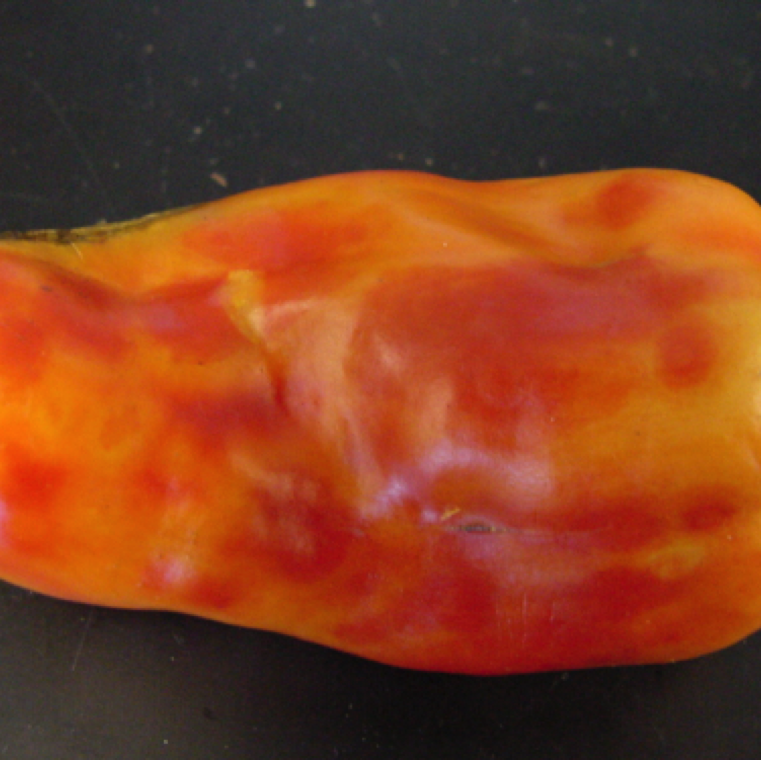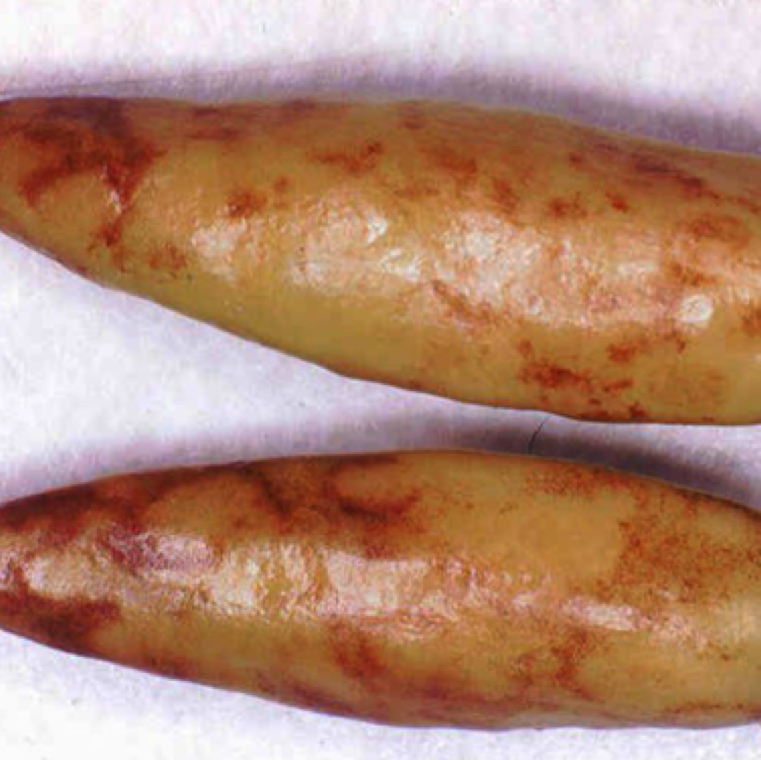

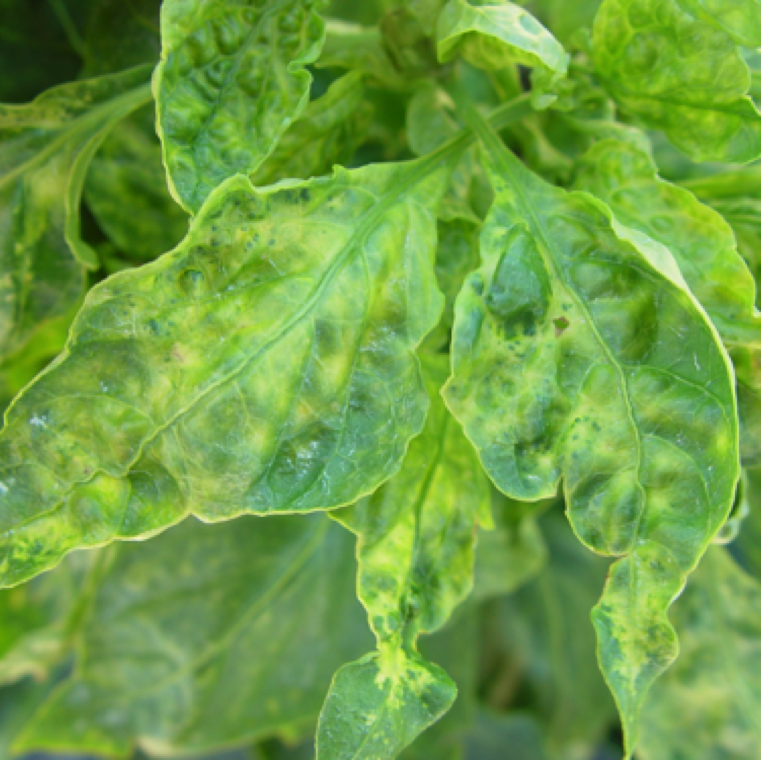
Tomato spotted wilt symptoms on pepper include chlorosis of leaves and blotches of green tissue. The disease can cause major damage on all peppers.

TSWV is acquired by the thrips larvae and transmits it as an adult. The initial symptom is chlorosis on leaves. The plant typically exhibits stunted appearance.

Leaves may become twisted and distorted. The severity and appearance of symptoms may vary depending on the pepper cultivar, the plant age, virus isolate, and environmental factors.
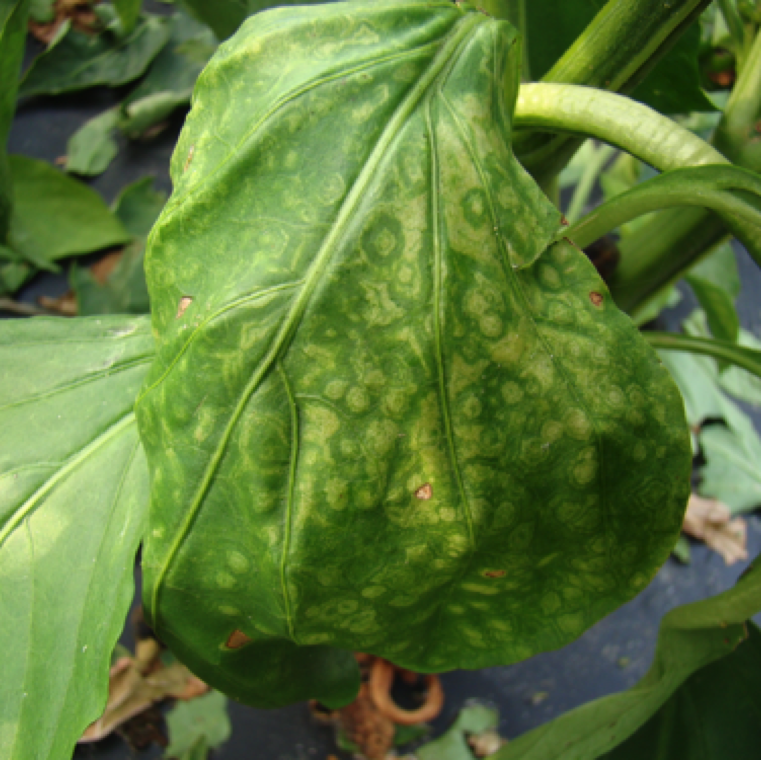
Leaves of infected plants may also develop chlorotic or necrotic ring spots. This is a symptom that can be very commonly seen on tomatoes also infected with the virus.
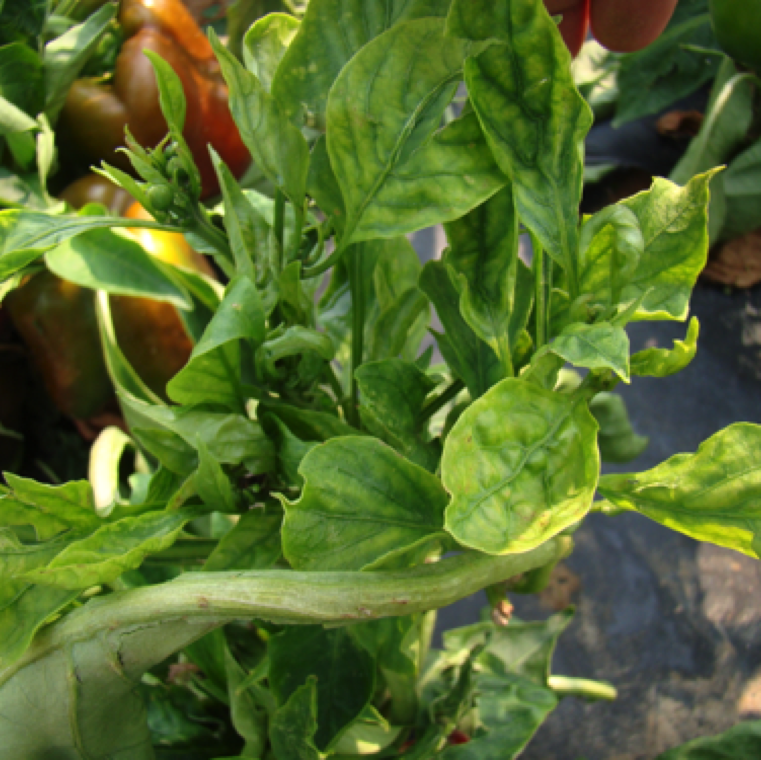
Stunting and yellowing of leaves except the veins can also be a symptom associated with he disease. This symptom could be confused with nutritional issues.

Fruits may also be affected, developing faint chlorotic or necrotic spots, ring spots or mosaic which can be seen when carefully observed.
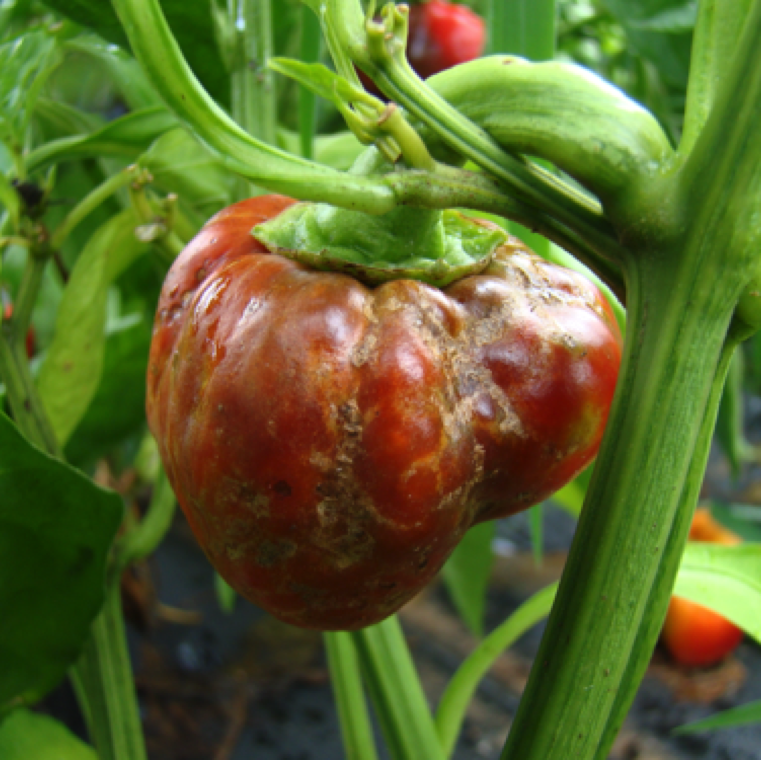
Symptoms on fruits are particularly evident as they ripen. This picture is a smaller sized bell pepper with bulging on the fruit due to severe TSWV infection.
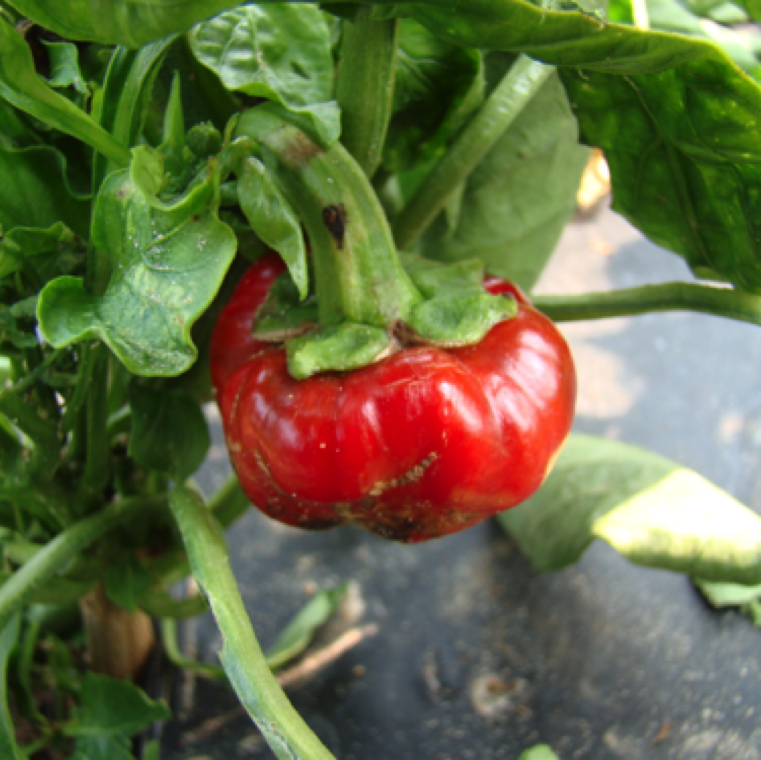
Necrotic spots may also appear on leaves, stem and peduncle. The fruits of affected plants are significantly smaller than fruits from non-infected plants.
TOMATO SPOTTED WILT
Viral causal agent: Tomato spotted wilt orthotospovirus - TSWV (Genus: Orthotospovirus, Insect vector: Thrips (Various species)
Pepper diseases
